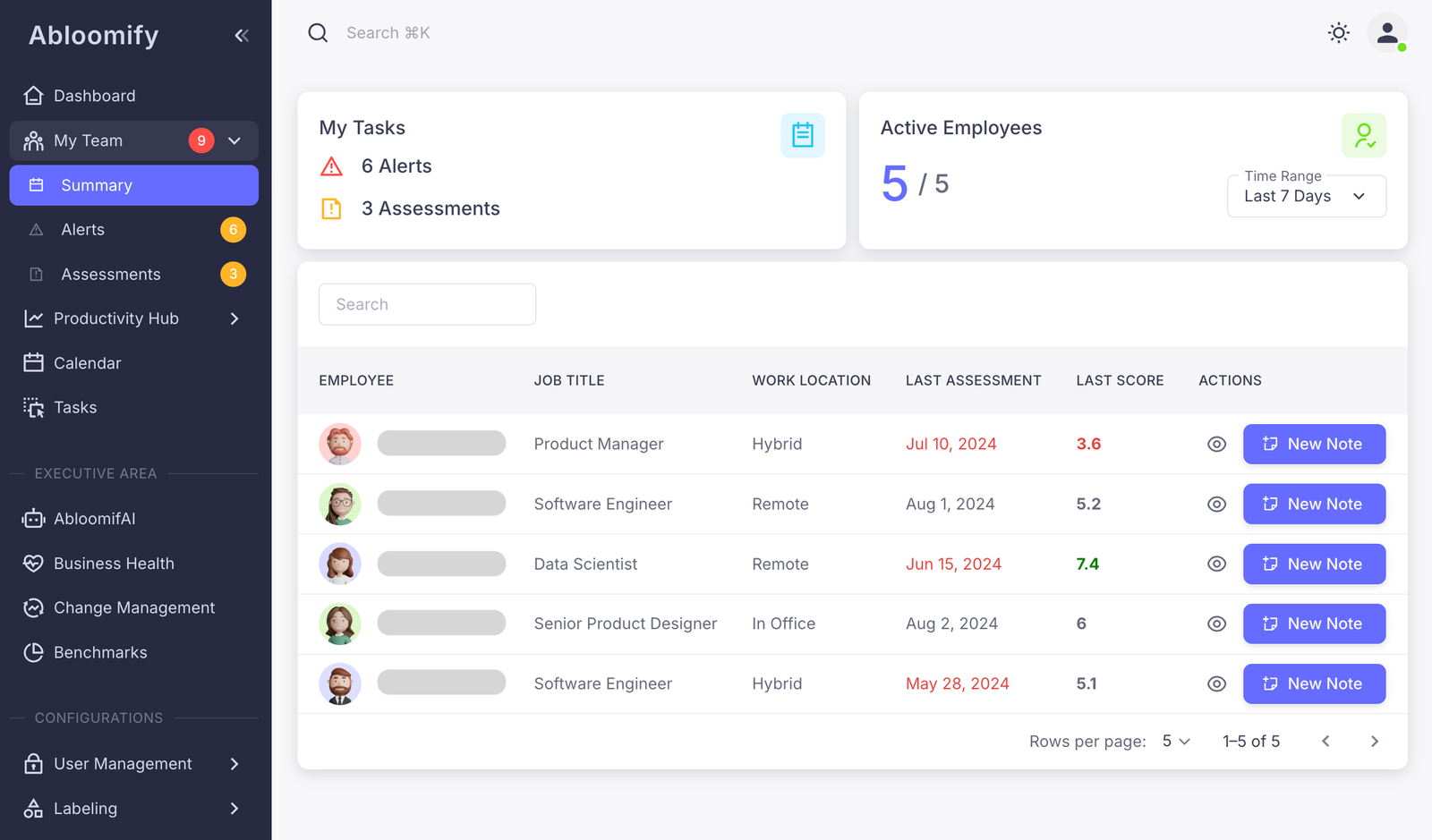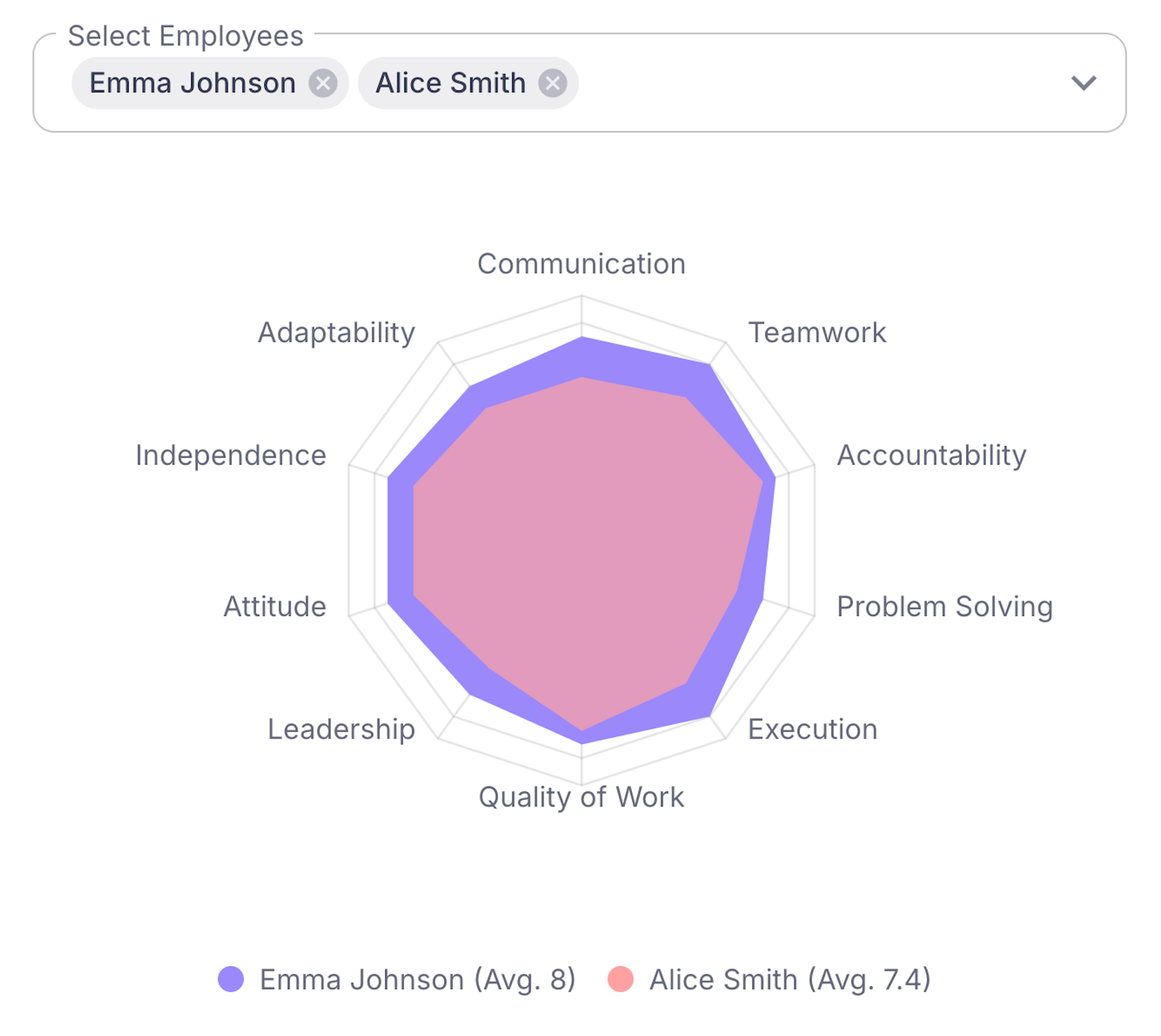Data-driven HR insights are reshaping how software companies manage their most vital resource: people. These insights empower leaders to build agile, efficient teams that drive sustainable growth. Embracing AI tools can streamline processes, enhance productivity, and foster innovative solutions to modern tech challenges. Learn how to leverage these insights for your software firm’s success.
The Power of Data-Driven HR Insights
The weight of tradition has long tethered HR management to instinct and intuition. In software firms, where innovation fuels every line of code, data has revealed itself as a catalyst for evolution. Data-driven insights have become the compass guiding HR strategies, leaving antiquated methods trailing in their wake.
Why? Because data doesn’t guess; it knows. It empowers software firms by revealing patterns invisible to the naked eye. These insights aren’t just numbers or percentages—they are narratives about a workforce, stories held together by statistics, and truths presented with clarity.
Here’s how data reshapes HR:
- Proactive Decision-Making: Traditional HR reacts, often firefighting; data-driven HR anticipates and navigates seamlessly through potential employee issues.
- Workforce Optimization: Data insights allow firms to allocate resources more effectively. This ensures each team member is not only utilized but also appreciated in their strengths.
- Enhanced Productivity Metrics: Data redefines KPIs, paving the path towards genuinely understanding productivity and where it meets creativity.
The role of HR in tech isn’t a static display but a dynamic contributor to strategic planning. Embracing data-driven approaches transforms it into a powerhouse of influence. For more on leveraging people analytics to boost productivity, explore how data empowers workforce strategies. True transformation isn’t fueled by secondhand insights but by mined data revealing the deepest truths. Forget where you’ve been—consider where data can take you.
AI-Driven Platforms Leading the Change
AI-powered platforms are reshaping the HR landscape in software firms, driving a revolution in how teams are managed. Tools like Abloomify offer groundbreaking services that redefine efficiency and insight. Consider the AI Manager Copilot. It’s more than just software; it’s a strategic partner guiding managers through complex HR terrain. It processes volumes of data, offering precise insights into team dynamics and individual performance.
Abloomify’s workforce planning tools bring clarity to staff allocation, predicting needs with uncanny accuracy. They help managers balance workloads, cut inefficiencies, and optimize team configurations. This is planning not by gut instincts but informed predictions, ensuring alignment with business goals.
Performance management frameworks have also evolved. These AI-driven systems offer a holistic view, intertwining real-time data with assessment strategies. Managers can instantly tap into trends, track growth, and identify areas needing improvement. What’s remarkable is the seamless integration with existing systems. No upheaval; just enhanced functionality.
These platforms foster informed decisions. Managers no longer navigate through static reports and spreadsheets. They access dynamic, actionable insights tailored to ever-changing contexts. Such capabilities open new horizons for HR leaders.
Abloomify’s tools are a case in point for harnessing AI to optimize workforce performance. They embody the transformative power of AI, enabling managers to propel software firms toward greater heights. As software firms harness these data-driven insights, they step into an era where HR becomes the driving force for progress.
Enhancing Productivity and Employee Engagement
Embracing data-driven tools in HR isn’t just about automating processes but about fostering a thriving workplace. To enhance productivity and engagement, software firms can leverage insights that pinpoint where attention is needed. Imagine a system that offers:
- Productivity alerts that notify when team output drops, empowering managers to act swiftly before minor inefficiencies swell into larger issues.
- Continuous performance assessments that shift feedback from an annual event to an ongoing conversation, ensuring that employees feel seen and valued, not just evaluated.
Now envision feedback mechanisms that transform passive reporting into active participation. They serve as a crucial tool for capturing real-time sentiments, allowing teams to adapt and embrace change smoothly.
Leaders equipped with these tools can preemptively identify stressors that lead to burnout. They can redefine their approach by asking: Are we overly focused on numbers, or are we nurturing creativity? Data-driven HR insights show that motivated employees perform better and stick around longer. So, instead of waiting for exit interviews to uncover dissatisfaction, this approach encourages leaders to create a feedback loop that supports employee happiness.
These proactive steps foster a culture where productivity and engagement are not just metrics but philosophies. Leaders thus become facilitators of a healthy work atmosphere, turning potential risks into opportunities for growth. For more strategies to improve team productivity, leveraging modern insights can be pivotal.
Workforce Planning and Flexibility
Navigating the complexities of workforce planning in software firms requires tools that provide coherent data-driven insights. These insights are invaluable, especially with the advent of hybrid and remote working environments. Picture a landscape where the talent is distributed, hours are flexible, and productivity is sky-high. To master this, firms must employ tools that forecast capacity needs and balance workloads efficiently.
Workforce planning tools are the silent enablers of this shift. They offer:
- Capacity Balancing: Analyze workloads to ensure no team is overburdened, paving the way for agile responses to shifting demands.
- Flexible Work Insights: Understand and optimize team structures, helping managers deploy resources where they’re most needed.
- Adaptability: Real-time data provides a dynamic understanding that’s crucial when roles or projects require swift pivoting.
Flexible workspace insights are not just about convenience. They influence how teams operate, fostering creativity while reducing burnout. As technology evolves, so will the sophistication of these tools, allowing leaders to anticipate needs and shifts with precision. The future belongs to those who adapt and embrace these tools to remain competitive.
Ultimately, workforce planning tools align seamlessly with tech advancements, ensuring the software industry continues to thrive. Consider exploring leading HR analytics platforms to further enhance your workforce planning strategies. Such tools offer a strategic advantage, harmonizing with broader trends while sustaining the momentum toward a more fluid, responsive workforce structure.
Performance Management and Career Development
Imagine a guide system that navigates careers like a GPS. Data-driven HR insights make this possible, transforming how software firms manage performance and career development. AI-powered tools provide managers with precise methodologies to enhance their teams.
Consider the benefits of a standardized assessment framework. This creates a shared language for evaluating performance, ensuring fairness and consistency. It pinpoints strengths and areas for growth, leading to actionable insights. For employees, this means knowing exactly where to channel their efforts for improved performance.
Now, think about AI-powered career path planning. These systems analyze skills, aspirations, and market trends to offer personalized growth plans. For tech professionals, it means seeing the path ahead clearly, understanding the exact skills needed, and receiving guidance every step of the way.
Continuous self-improvement becomes essential. Employees aren’t just filling roles; they are on an evolving journey. In the fast-moving tech landscape, skill development isn’t optional; it’s vital. Managers can leverage these insights to keep the team agile and ready to adapt.
Incentivizing growth becomes straightforward. By recognizing skill advancement and aligning it with career objectives, leaders can foster a learning culture. This approach not only attracts top talent but also enhances retention. Leaders who understand these dynamics create environments where talent thrives. Explore how performance management for software companies links performance with career progression, fueling both individual and organizational success.
Change Management and Technological Adaptation
Every technological leap requires a journey through the landscape of change management. To implement new HR technologies, software firms must embrace both innovation and adaptation. But how exactly do we ensure these transitions are not just smooth, but transformative?
Consider these essential elements:
- Communication: Regular updates and transparency are vital. Employees must understand not just the how, but the why of new technologies.
- Training: Equip teams with the right skills. Innovative tools demand equally innovative training approaches.
- Feedback Loops: Create channels for continuous employee feedback. This fosters an agile environment where adaptation is iterative and informed by those at the coalface.
With new technologies, measuring impact becomes paramount. Tools like license usage analysis and system adoption metrics offer insights into usage patterns. These insights help manage costs and streamline processes, enhancing efficiency.
Best practices for adaptability include fostering a mindset that welcomes change. Leaders can encourage experimentation and development of new skills. Creating a safe space for failure and learning propels teams forward.
Moreover, recognizing change as a journey, rather than a destination, redefines how teams approach each challenge. Adapting isn’t just about technology; it’s about cultivating a culture that thrives on evolution.
For more strategies on cultivating an adaptable workforce, explore how to improve team productivity in modern workplaces. Techniques outlined there align seamlessly with fostering adaptability during transformative periods.
Implementing Privacy-First Technology
Maintaining a privacy-first approach in harnessing HR insights is crucial. It’s essential to consider the ethical implications, especially in a world where data is the new currency. Offering aggregate insights over invasive tracking fosters trust with employees and respects individual privacy. When the focus shifts from surveying every keystroke to understanding trends and patterns, it transforms how a team feels about being analyzed.
Here are the benefits of embracing aggregate insights without invasive approaches:
- Trust Building: Employees are more likely to engage and contribute when they know their data isn’t individually scrutinized.
- Reduced Anxiety: A culture of respect and transparency leads to a positive work environment.
- Ethical Compliance: Companies must adhere to legislation and ethical standards, validating their commitment to employee welfare.
Balancing data utilization and privacy also involves ensuring transparency with AI-driven tools. Businesses should communicate the purpose and scope of data collection clearly. This approach not only aligns with ethical practices but also positions the company as a leader in responsible data use.
By implementing privacy-first technology, software firms can create an environment of openness and security. Ethical compliance becomes a competitive edge, nurturing a workspace where innovation meets integrity. To learn more about leveraging AI for better outcomes, explore responsible performance management strategies, which effectively combine technology with respect for privacy.
Final words
Acknowledging the role of data-driven HR insights, software firms can navigate the challenges of today’s workforce dynamics. By leveraging AI tools like Abloomify’s platform, companies can transform HR processes, build robust teams, and maintain competitive advantage. For personalized assistance in adopting these solutions, reach out to us and start building a future-ready team today.



